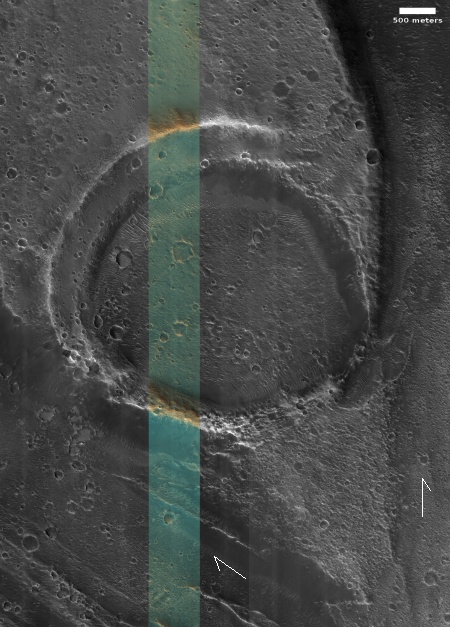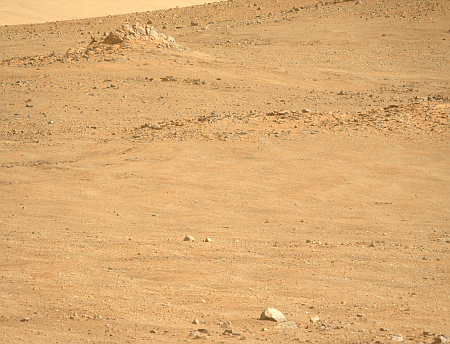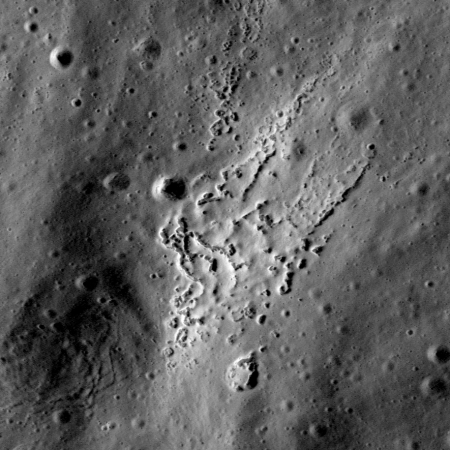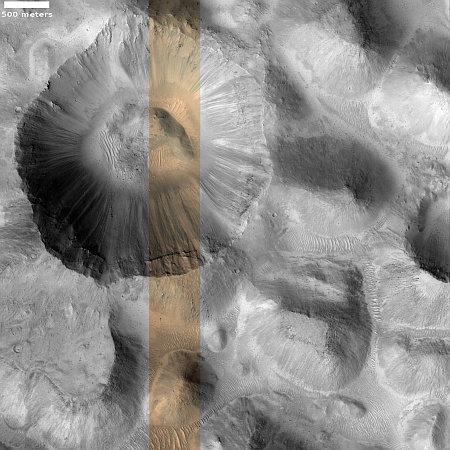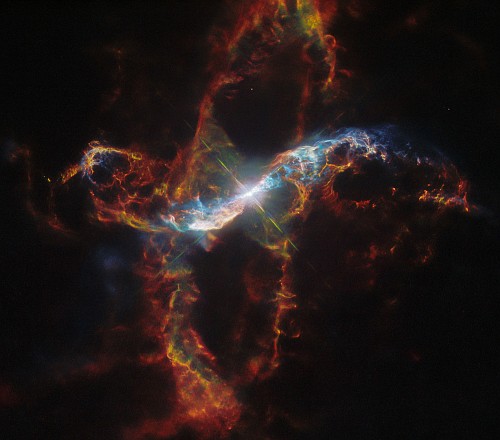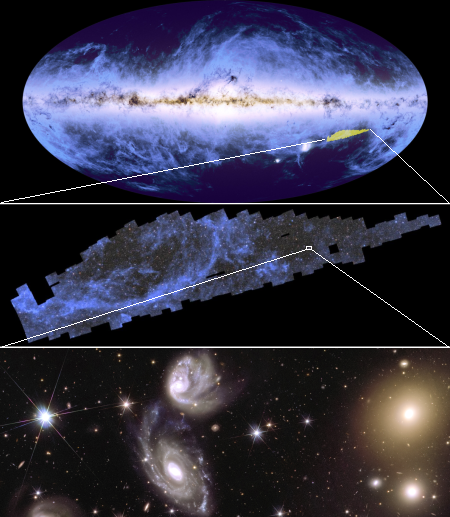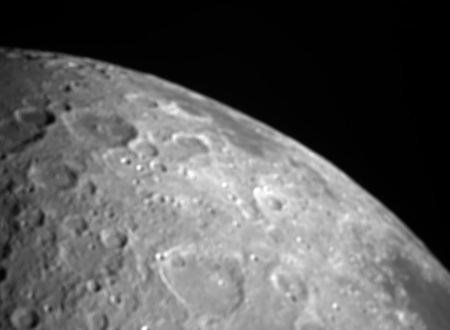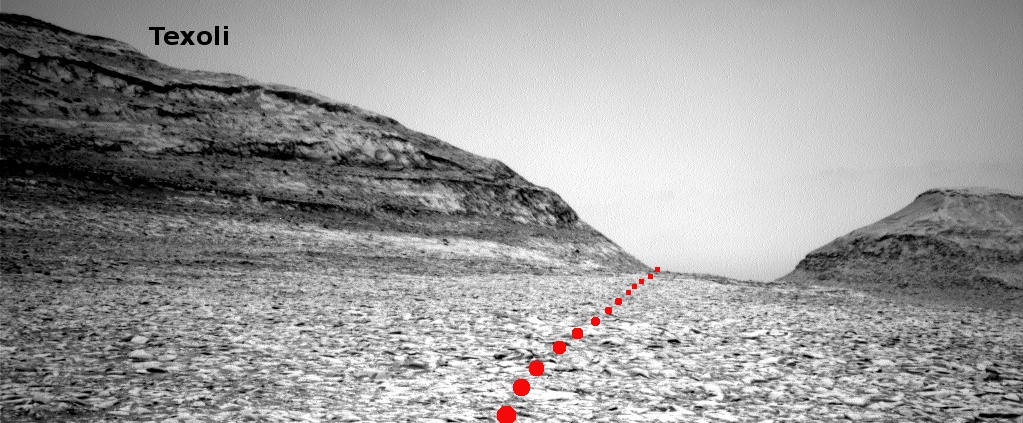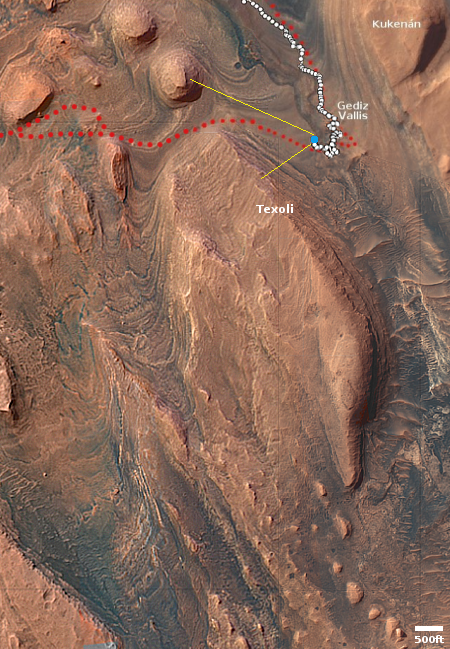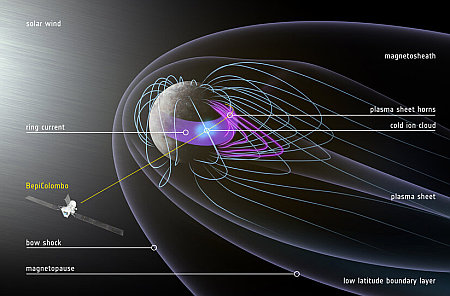The obvious visual evidence for assuming Mars once had catastrophic floods
Since the first comprehensive orbital data of Mars was sent back in the early 1970s by Mariner 9, scientists have generally concluded that many of the features seen at the eastern end of the giant Valles Marineris canyon were caused by one or several catastrophic floods.
The picture to the right, rotated, cropped, and reduced to post here and taken on July 26, 2024 by the high resolution camera on Mars Reconnaissance Orbiter (MRO), provides a good example of why the scientists have come to that conclusion. It shows what the camera team labels a “streamline feature surrounding crater.” I have added the arrows to indicate the presumed direction of flow. The flow went around this 2.5-mile-wide unnamed crater because the impact had compacted it, making it resistent to erosion. The flow however was strong and large enough to wash away the plateau on which the crater sits, as well as cutting into the crater’s southwest rim. In addition, the rim on the southeast was also cut through at some point, this time from what might have been flow eddies as the flood pushed past.
Hence, the theory of catastrophic floods.
Since the first comprehensive orbital data of Mars was sent back in the early 1970s by Mariner 9, scientists have generally concluded that many of the features seen at the eastern end of the giant Valles Marineris canyon were caused by one or several catastrophic floods.
The picture to the right, rotated, cropped, and reduced to post here and taken on July 26, 2024 by the high resolution camera on Mars Reconnaissance Orbiter (MRO), provides a good example of why the scientists have come to that conclusion. It shows what the camera team labels a “streamline feature surrounding crater.” I have added the arrows to indicate the presumed direction of flow. The flow went around this 2.5-mile-wide unnamed crater because the impact had compacted it, making it resistent to erosion. The flow however was strong and large enough to wash away the plateau on which the crater sits, as well as cutting into the crater’s southwest rim. In addition, the rim on the southeast was also cut through at some point, this time from what might have been flow eddies as the flood pushed past.
Hence, the theory of catastrophic floods.

